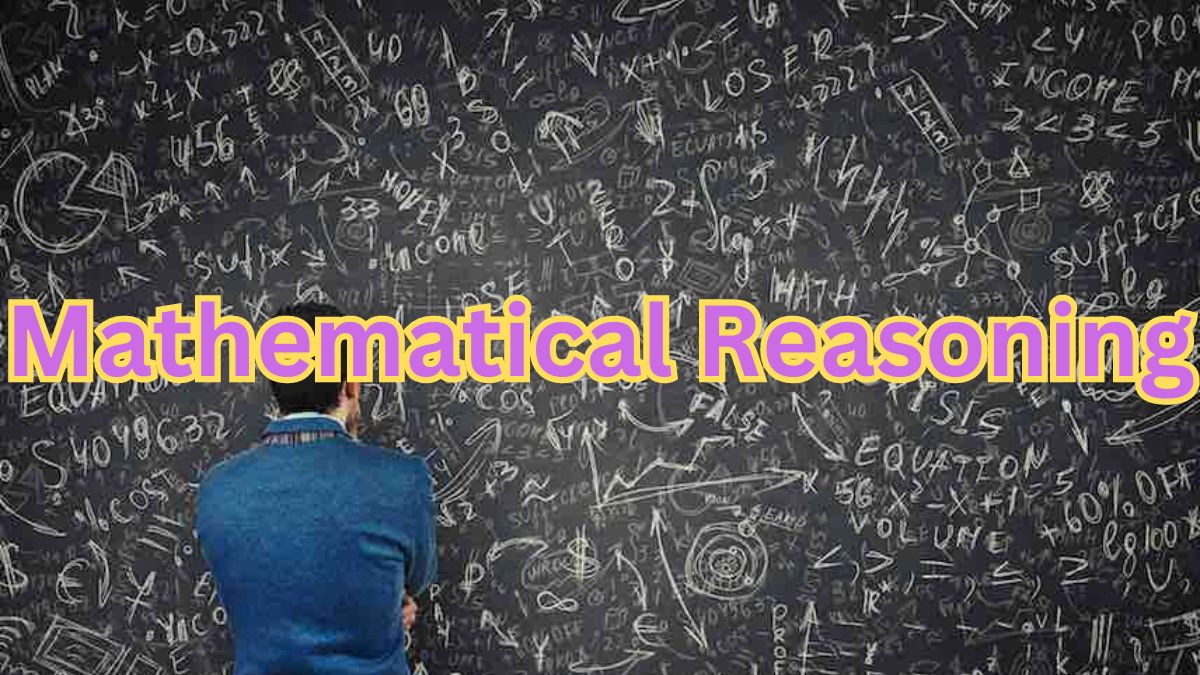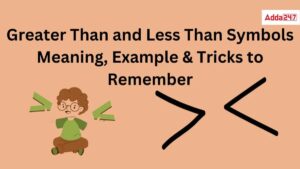Long before the beginning of the modern era of science and mathematics, the concept or mathematical reasoning existed. The mathematical reasoning can therefore be termed as one of the earliest concepts of Mathematics. Reasoning can be inferred or applied only if we have been provided with the statements. The statements used in the case of reasoning in mathematics is also known as mathematical statements or statements in mathematical reasoning.
Mathematical Reasoning
Mathematical reasoning, also known as the principle of mathematical reasoning, involves determining the truth values of provided statements within the field of mathematics. These types of logical statements are frequently seen in competitive exams such as JEE and the problems are quite simple and enjoyable to solve. In this article, we will explore the concept of mathematical reasoning and learn effective problem-solving techniques.
Mathematical Reasoning and Statements
The core or prelude of the reasoning in mathematics is the mathematical statements. The statements and mathematical reasoning completes each other. Without the presence of mathematical statements, we cannot derive any reasoning. In other words, we can say that statement is the basic unit of reasoning in mathematics. To learn the concept of reasoning and statements used in applied mathematics, we will have to explore its meaning and examples.
What is Meant by Mathematical Reasoning?
Mathematical reasoning is an important ability that allows students to assess a given hypothesis without considering any specific context or significance. Simply put, when it comes to analyzing a scientific investigation or claim, the logic used is not influenced by personal viewpoints.
Derivations and proofs necessitate a factual and scientific foundation. The skills of mathematical critical thinking and logical reasoning are essential for solving mathematical reasoning problems. It is a part of mathematics where we learn to obtain the true values of the statements presented before us.
What is a Mathematical Statement?
A sentence is considered a statement if it can be classified as correct or incorrect, true or false. It cannot be both, as a sentence that is both true and false is not a statement. Additionally, if a sentence is neither true nor false, it is also not considered a statement. For example,
Sentence 1: Independence Day is on 15 August
Sentence 2: The weight of ant is greater than the weight of the lion.
Upon reading these statements, we can quickly determine that sentence 1 is accurate while sentence 2 is incorrect. Therefore, these sentences are considered to be statements because they can be proven as either true or false, and do not contain any ambiguity.
Mathematically Acceptable Statements
To know whether a sentence is mathematical statement or not, we have to look at its certain aspects.
A statement in mathematics is any sentence that abides by certain rules given below.
- For a statement to be mathematically valid, it must be either true or false, but not both simultaneously.
- A sentence is not considered a mathematically validated statement if it is imperative, interrogative, or exclamatory.
- An open statement is defined as a sentence that contains one or more variables. An open statement can transform into a closed statement by substituting specific values for the variables in the sentence.
It is important to understand that a sentence cannot be considered a statement if:
- The given statement includes pronouns such as ‘she’, ‘he’, ‘they’ etc.
- The given statement is a question.
- The statement is an order or request.
- It is in exclamation format.
- The given statement involves variable places such as ‘here’, ‘there’, ‘everywhere’ etc.
- The given statement includes variable time such as ‘today’, ‘tomorrow’, ‘yesterday’ etc.
Mathematical Reasoning Types
There are seven types of mathematical reasoning: intuition, counterfactual thinking, critical thinking, backward induction, inductive reasoning, deductive reasoning, and abductive induction. Among these 7 types, the following two are considered the primary types.
Inductive Reasoning
Inductive reasoning involves checking the validity of a statement using a set of rules and then making a generalization based on the given statement. In simpler terms, inductive reasoning is a form of reasoning that is not strict, where statements are generalized.
In the Inductive method of mathematical reasoning, a particular set of rules is used to verify the validity of a statement before generalizing it. The concept of inductive reasoning is utilized in the principle of mathematical induction. Inductive reasoning is not included in geometrical proofs due to its generalization. Here is an illustration that will aid in the comprehension of inductive reasoning in mathematics.
The example of inductive reasoning is given hereunder:
Statement:The cost of labor to create the item is Rs. 5, while the cost of goods is Rs. 10. The item has a sales price of Rs. 50.
Reasoning: Based on the statement made, it can be concluded that the product will generate a satisfactory amount of profit for the retailers that sell it.
Deductive Reasoning
Deductive reasoning is a rigorous form of reasoning where statements are treated as true if the assumptions being made are true. In the field of mathematics, deductive reasoning holds greater significance than inductive reasoning.
Deductive reasoning is the antithesis of inductive reasoning. In contrast to inductive reasoning, deductive reasoning involves using the principles of a broad scenario to validate specific statements. The concept of mathematical induction relies on deductive reasoning (despite its misleading name). The example provided below will aid in gaining a better understanding of deductive reasoning in mathematics. The example is given below:
Statement: The Theorem of Pythagoras holds true for any right-angled triangle.
Reasoning: If triangle ABC is a right triangle, it will follow the Pythagoras Theorem.
Types of Reasoning Statements
There are 3 major types of reasoning statements in Mathematics. These are:
- Simple Statements
- Compound Statements
- If-Then Statements
Let us learn these mathematical statements one by one:
Simple Mathematical Statements
A statement is considered simple if its truth value is not reliant on another statement. Put differently, a basic statement should not be made up of basic statements.
So, a basic statement cannot be further simplified into simpler statements. Working with straightforward statements is the most simple, and we can easily use a direct reasoning method. Some instances have been given to elucidate the idea of straightforward declarations.
Example: Square is a parallelogram.
Reasoning: Modifiers are absent in the provided statement. Hence, it can be concluded that the statement provided is simple.
Compound Mathematical Statements
Put simply, when simple statements are combined together, they form a compound statement. Hence, these statements consist of a combination of at least two simple statements connected by words such as ‘and’ or ‘or’.
Various alternative connectives can be used in place of the two connectives listed. These statements are essential for using Deduction reasoning in Mathematics. Take a closer look at the detailed example provided below to gain a clearer insight. Let us understand this statements through an example.
Example: We have selected two basic statements that can be linked with a connector.
Statement 1: Transversal lines make equal alternate angles with parallel lines
Statement 2: Parallel lines do not intersect.
Compound Statement: Transversal lines make equal alternate angles with parallel lines and Parallel lines do not intersect.
If-Then Mathematical Statements
If-Then statements are also known as conditional statements. Conditional statements that consist of an if-then proposition, with a hypothesis leading to a conclusion, are referred to as If-then statements. If the assumption is correct and the result is incorrect, the if-then statement is considered incorrect. Similarly, if the assumption is incorrect, the entire assertion is incorrect.
If a condition leads to a result, proving the condition true will also prove the result true, and proving the result false will also prove the condition false. If we come across a statement that says ‘a if and only if b’, we can justify it by demonstrating that if a is true, then b is also true and if b is true, then a is also true. Go through the example given below to understand this concept.
Example 1: If 60% population is female then 40% population is male.
Reasoning: Here the 60% female is the hypothesis and if that condition is met then the conclusion is satisfying.
Mathematical Reasoning and Statements Examples
Go through the solved examples provided below to make your concept of mathematical reasoning and mathematical statements strong.
Example 1: SQUARE:PERIMETER::CIRCLE 😕
A.RADIUS
B. CHORD
C. SECTOR
D. CIRCUMFERENCE
Ans: D. CIRCUMFERENCE
Reasoning: The perimeter of a square represents its boundary, while the circumference is the boundary of a circle.
Example 2: Review the following set of statements and indicate which ones are considered valid mathematically.
i) The Sun rises in the east.
ii) New Delhi is a country.
iii) Red rose is more beautiful than a yellow rose.
Solution: Upon reading the initial statement, it is clear that the first statement is true while the second statement is false without a doubt. Different individuals’ perceptions may influence the interpretation of the third statement. Therefore, it may be accurate for certain individuals and simultaneously incorrect for others. However, ambiguous statements are not permissible for logical reasoning in mathematics.
Therefore, a statement is considered valid in mathematics only if it is either true or false, but not both simultaneously. Therefore, statements 1 and 2 are deemed mathematically valid, whereas statement 3 is not mathematically acceptable.
Example 3: The total of x, y, and z, three natural numbers, is always negative.
Solution: This statement is deemed acceptable. It will always be false because every positive number is greater than zero, so the total of positive numbers cannot be negative.











 Greater Than and Less Than, Equal to Sig...
Greater Than and Less Than, Equal to Sig...
 XXV Number- XXV Roman Numerals Definitio...
XXV Number- XXV Roman Numerals Definitio...
 Ordinal Numbers: Meaning, Examples, Appl...
Ordinal Numbers: Meaning, Examples, Appl...














